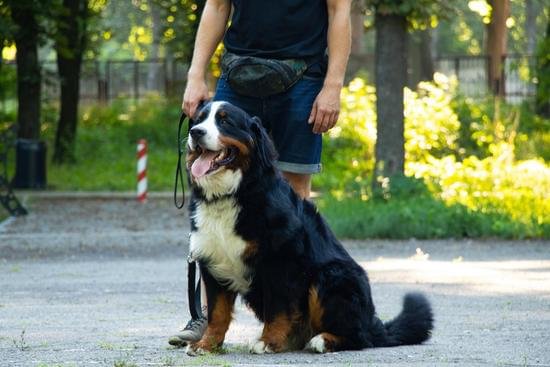Crate training can be a valuable tool when welcoming a rescue dog into your home, especially at night. Many rescue dogs may have had difficult past experiences or transitions, making them anxious or uncertain in new environments. This article will guide you on how to crate train a rescue dog at night, offering tips and strategies to help your furry companion feel safe, secure, and comfortable during bedtime.
Rescue dogs often benefit from crate training as it provides them with a sense of security and a designated space that is exclusively theirs. This training method can aid in housebreaking, reducing anxiety, and creating a routine for your new pet. By understanding the importance of crate training for rescue dogs, you can set the foundation for a positive relationship with your furry friend.
Choosing the right size and location for the crate is crucial when beginning the training process. The crate should be large enough for your dog to stand up, turn around, and lie down comfortably. It should also be placed in a quiet area of your home where your pet can feel safe and relaxed. Introducing your rescue dog to the crate gradually and positively will help build trust and create a positive association with their new sleeping space.
Setting Up the Perfect Crate
When it comes to crate training a rescue dog at night, one of the most crucial aspects is setting up the perfect crate for your furry friend. The right size and location can make a significant difference in how comfortable and secure your dog feels in their new space. Here are some key points to consider when creating a safe and inviting environment for your rescue pup:
- Size Matters: Choose a crate that is large enough for your dog to stand up, turn around, and lie down comfortably. A crate that is too small can cause stress and discomfort, while one that is too large may not provide a sense of security. Measure your dog from nose to tail and from the top of the head to the ground to ensure you select the appropriate size.
- Location, Location, Location: Place the crate in a quiet and peaceful area of your home where your dog can rest undisturbed. Avoid placing it near drafty areas, direct sunlight, or high-traffic areas that may cause unnecessary stress. Providing a cozy blanket or familiar bedding inside the crate can also make it feel more inviting.
Introducing your rescue dog to their new crate should be done gradually and positively to build trust and create a positive association with their new space. By following these tips on setting up the perfect crate, you are laying down the foundation for successful nighttime training with your rescue dog.
Remember that each dog is unique, so patience and observation are key in determining what works best for your furry companion during this process. Being consistent and offering plenty of praise and rewards can go a long way in helping them adjust to their new routine in the crate at night. With time, dedication, and love, you can help your rescue dog feel safe, comfortable, and secure while crate training at night.
Introducing Your Rescue Dog to the Crate
Starting Slowly and Gently
When it comes to crate training a rescue dog at night, it is essential to start slow and gentle. Remember that your rescue dog may have had negative experiences in the past, so patience is key. Begin by introducing the crate as a positive space during the day before attempting nighttime crate training. Leave the door open and place comfortable bedding inside to make it inviting for your dog.
Using Treats and Rewards
One effective way to build a positive association with the crate is by using treats and rewards. Encourage your rescue dog to explore and enter the crate on its own by placing treats inside. You can also feed meals near the crate or use special toys that your dog enjoys as a way to create a positive connection with their new sleeping space.
Creating a Comfortable Environment
Ensuring that the crate is a comfortable and safe space for your rescue dog is crucial in building trust. Make sure the bedding inside the crate is cozy and familiar for your dog. You can also drape a blanket over part of the crate to create a den-like atmosphere, which may help alleviate any anxieties your rescue dog may have about being confined. Remember, creating a calm environment will help ease your dog’s transition into nighttime crate training.
By taking these steps and gradually introducing your rescue dog to the crate in a positive manner, you can build trust and create a strong bond with your furry friend. Remember that every dog is unique, so be patient and understanding throughout the process of how to crate train a rescue dog at night.
Creating a Bedtime Routine
When it comes to crate training a rescue dog at night, establishing a bedtime routine is essential for success. Dogs, especially rescue dogs who may have experienced trauma or instability in the past, thrive on routines and predictability. By creating a structured schedule for nighttime crate training, you can help your furry friend feel safe, secure, and comfortable in their new environment.
One important aspect of setting up a bedtime routine for crate training is to establish consistent meal times. Feeding your rescue dog at the same time each evening can help regulate their digestive system and reduce the chances of bathroom accidents during the night. It’s also helpful to provide ample opportunities for your dog to go outside to relieve themselves before settling down in their crate for the night.
In addition to consistent meal times, incorporating calming activities before bedtime can help signal to your rescue dog that it’s time to wind down. Taking your pup for an evening walk or engaging in a gentle play session can help burn off excess energy and promote relaxation.
You may also consider implementing soothing rituals such as cuddling on the couch or practicing basic obedience commands in a quiet, calm manner. These activities can help create positive associations with bedtime and the crate, making it a more inviting space for your rescue dog to rest peacefully throughout the night.
Dealing With Separation Anxiety
Understanding Separation Anxiety in Rescue Dogs
Rescue dogs, due to their past experiences, may have a higher tendency to develop separation anxiety when left alone, especially at night. This anxiety can manifest through behaviors like whining, pacing, barking, or even destructive actions. It is crucial to understand that this behavior stems from fear or uncertainty and not defiance. Therefore, patience and gentle reassurance are essential in helping your rescue dog cope with nighttime crate training.
Creating a Comforting Environment
To ease your rescue dog’s anxiety during the night, it is important to create a comforting environment within the crate. Adding familiar blankets, toys, or clothing with your scent can provide a sense of security for your furry companion.
Additionally, incorporating calming elements such as soothing music or a white noise machine near the crate can help reduce stress and promote relaxation. The goal is to make the crate a safe and inviting space where your rescue dog feels secure and at ease.
Gradual Desensitization and Positive Reinforcement
When dealing with separation anxiety during nighttime crate training, gradual desensitization plays a key role in helping your rescue dog adjust. Start by leaving your dog alone for short periods during the day and gradually increase the duration over time. Use positive reinforcement techniques such as treats, praise, or toys to encourage calm behavior when inside the crate.
This will help your rescue dog associate being alone in the crate with positive experiences and build confidence in being separated from you at night. Remember that consistency and patience are key in helping your rescue dog overcome separation anxiety during crate training sessions at night.
Using Positive Reinforcement
Crate training a rescue dog at night can be a challenging but rewarding process. Positive reinforcement is a key strategy in helping your furry friend adjust to sleeping in their crate. One effective way to encourage good behavior is by using treats as rewards.
When your dog willingly enters the crate or remains calm throughout the night, offer them a tasty treat as a form of positive reinforcement. This helps associate the crate with something positive and reinforces the desired behavior.
Consistency is crucial when using positive reinforcement in crate training. Make sure to reward your rescue dog every time they display the desired behavior, such as going into the crate on their own or staying quiet during the night. Additionally, be patient and understanding if your dog takes time to adjust to their new routine. Remember, every dog is unique, and it may take some time for them to feel comfortable in their crate.
In addition to treats, you can also use toys or verbal praise as forms of positive reinforcement during crate training. Some dogs may respond better to playtime or affectionate affirmations as rewards for good behavior. The key is to find what motivates your rescue dog and use that to encourage them in their crate training journey. With patience, consistency, and positive reinforcement, your rescue dog will soon become more comfortable sleeping in their crate at night.
| Positive Reinforcement Strategies | Benefits |
|---|---|
| Using treats as rewards | Associate crate with positivity |
| Consistency in rewarding good behavior | Helps reinforce desired actions |
| Alternative rewards like toys or praise | Motivates dogs based on individual preferences |
Handling Nighttime Whining or Barking
When it comes to crate training a rescue dog at night, one of the biggest challenges pet owners face is handling nighttime whining or barking. This behavior can be distressing for both the dog and the owner, but it is important to address these issues with patience and understanding. By implementing effective strategies, you can help your rescue dog adjust to their crate and feel more comfortable during the night.
Here are some tips for handling nighttime whining or barking when crate training a rescue dog:
- Ignore the Behavior: While it may be difficult, try not to react to your dog’s whining or barking. Responding to this behavior may reinforce it, as your dog might see it as a way to get attention. Instead, wait for a moment of silence before providing any interaction.
- Provide Comfort: If your rescue dog seems anxious or scared during the night, consider placing an item with your scent in their crate, such as a piece of clothing. This can help them feel more secure and comforted while in their crate.
- Use White Noise: Playing soothing white noise or calming music in the background can help drown out external sounds that may trigger whining or barking. This can create a more relaxing environment for your rescue dog to sleep peacefully in their crate.
Remember that every rescue dog is unique and may require different strategies for overcoming nighttime behavioral challenges. Stay consistent with your approach, remain patient, and provide positive reinforcement for good behavior. With time and effort, your rescue dog can learn to feel safe and secure in their crate at night.
Troubleshooting Common Issues
Rescue dogs can often come with their own set of challenges when it comes to crate training, including accidents, fear, and other issues. It’s important to address these common problems with patience and understanding to help your furry friend successfully adjust to crate training at night.
One common issue that rescue dog owners may face is accidents inside the crate. This can be due to a variety of reasons such as anxiety, lack of proper potty training, or simply being uncomfortable in the confined space.
To address this issue, make sure to take your dog outside for regular potty breaks before bedtime and immediately after they wake up in the morning. Additionally, consider using a divider in the crate to make it smaller, so your dog is less likely to have an accident in one corner.
Fear is another challenge that some rescue dogs may experience during crate training at night. They might be scared of being alone in a new environment or have past trauma associated with confinement. To help alleviate this fear, gradually introduce your dog to the crate during the day with positive reinforcement such as treats and toys.
Create a safe and comfortable space within the crate by lining it with blankets or bedding that has familiar scents. Slowly increase the amount of time your dog spends in the crate while you are present before transitioning to nighttime crate training.
It’s essential to remember that every rescue dog is unique and will require different strategies and approaches when it comes to crate training at night. By addressing accidents, fear, and other challenges with patience and persistence, you can help your furry companion feel safe and secure in their crate during bedtime. Remember to celebrate small victories along the way and stay consistent in your training efforts to see progress over time.
| Common Issues Addressed | Strategies Used |
|---|---|
| Accidents inside the crate | Regular potty breaks before bedtime and after waking up; Using a divider in the crate |
| Fear during crate training | Gradual introduction with positive reinforcement; Creating a safe and comfortable environment within the crate |
Patience and Persistence
Crate training a rescue dog at night can be challenging, but with patience and persistence, you can help your furry friend feel safe and secure in their crate. Consistency is key when it comes to crate training, as rescue dogs may have past experiences that make adjusting to a new routine difficult. It’s important to remember that every dog is different, so progress may take time, but with dedication, you will see positive results.
One of the first steps in crate training a rescue dog at night is to establish a consistent bedtime routine. This routine should include feeding your dog at the same time each evening, taking them for a walk before bedtime, and then placing them in their crate for the night. By creating a predictable schedule, your rescue dog will start to associate their crate with sleep and relaxation, making it easier for them to settle down at night.
It’s also essential to use positive reinforcement when crate training your rescue dog at night. Make sure to reward good behavior with treats or praise, and avoid punishment for whining or barking.
Encouraging progress through positive reinforcement will help build trust between you and your rescue dog, making the crate a more inviting space for them. Remember to be patient and persistent in your efforts, as consistency and time are key components of successful crate training for rescue dogs at night.
Conclusion
Crate training a rescue dog at night can be a challenging but rewarding process. By understanding the importance of crate training for rescue dogs, setting up the perfect crate, and introducing your furry friend to it with positive associations, you are laying the foundation for a successful training experience. Establishing a bedtime routine and using positive reinforcement techniques will help your rescue dog feel more comfortable and secure in their crate during nighttime hours.
One of the key aspects of crate training a rescue dog at night is addressing any separation anxiety they may experience. Providing comfort, soothing techniques, and gradually increasing the time spent in the crate can help alleviate any distress your dog may feel.
Additionally, dealing with nighttime whining or barking requires patience and consistency in addressing behavioral challenges. By using strategies to calm your dog and encourage quiet behavior, you can create a peaceful sleep environment for both you and your furry companion.
As you navigate through the process of crate training your rescue dog at night, remember to remain patient and persistent. Celebrate small victories along the way, such as longer periods of quiet time in the crate or fewer accidents during the night.
With time, dedication, and a lot of love, your rescue dog will make progress in their crate training journey. Ultimately, by staying committed to consistency and providing a safe space for your dog to rest peacefully at night, you will see success in creating a harmonious bedtime routine for both you and your beloved pet.
Frequently Asked Questions
Should You Crate a Rescue Dog at Night?
Crate training a rescue dog at night can be a helpful tool in making them feel secure and establishing a routine. It can provide them with their own safe space, especially during the adjustment period in their new environment.
How Long Does It Take to Crate Train a Rescue Dog?
The time it takes to crate train a rescue dog can vary depending on the individual dog’s background and temperament. Some dogs may adjust quickly to the crate, while others may take longer due to past experiences or anxiety. Consistency, patience, and positive reinforcement are key in successfully crate training a rescue dog.
How Do I Stop My Rescue Dog From Crying in the Crate?
To stop your rescue dog from crying in the crate, it’s important to address any underlying reasons for their distress. This could include separation anxiety, fear of confinement, or discomfort. Gradual desensitization to the crate, ensuring it’s comfortable and enticing with toys or treats, as well as keeping a consistent routine can help alleviate their crying behavior.

Welcome to the blog! I am a professional dog trainer and have been working with dogs for many years. In this blog, I will be discussing various topics related to dog training, including tips, tricks, and advice. I hope you find this information helpful and informative. Thanks for reading!





